On July 11, 2022, the National Aeronautics and Space Administration (NASA) released the first image captured by the James Webb Space Telescope, which shows the universe as it has never been seen before. President Joe Biden released the first photo in a live event streamed on NASA TV.
[TRENDING: Win tickets to watch Artemis 1 rocket launch | Video shows large gator eating another alligator in Silver Springs | ‘That’s a biggin’:’ Giant waterspout stuns early risers in Destin | Become a News 6 Insider (it’s free!)]
Recommended Videos
Prior to the reveal, the image and four others captured by the James Webb Space Telescope were only shared with a small group of scientists from around the world who were astounded and almost moved to tears. These groundbreaking images are only the start of the Webb Telescope pioneering the next era in space photography and digital exploration.
NASA officially began operations on Oct. 1, 1958, as the primary organization for U.S. civil aerospace research and development. Just 11 years later, NASA landed the first human on the moon in 1969. In the 1970s, the focus shifted to developing a space station. Skylab was launched, unmanned, in May 1973. Three crewed missions followed during the next seven months to repair the station and conduct experiments. The first international space station partnership was the Apollo-Soyuz Test Project in 1975, which brought American and Soviet crews together.
The space shuttle program became fully realized in April 1981 with the manned launch of the Columbia. In 135 missions flown with five shuttles, there were two catastrophic accidents—Challenger and Columbia. Discovery delivered the Hubble Space Telescope into orbit. The 30-year shuttle program was significant in setting the foundation for future Earth-to-orbit transportation and sustained space stays.
Shuttle technology led to the construction of the International Space Station, the largest structure humans have put into space. As of May 2022, 258 astronauts from 20 countries have lived there, conducting experiments and documenting life in space since 2000.
In 2017, NASA opened the digital doors to its image and video library website, allowing the public to access more than 140,000 images, videos, and audio files. The collection provides unprecedented views of space. Stacker reviewed the collection to select 31 of the most breathtaking images, including the first from the James Webb Space Telescope. Keep reading to see these stunning images, curated with further information about the captured scenes.

NASA, ESA, CSA, and STScI
The first image captured by the James Webb Space Telescope
On July 11, 2022, NASA released the first image captured by the James Webb Space Telescope allowing us to see “the deepest and sharpest infrared image of the distant universe to date,” according to NASA. Known as Webb’s First Deep Field, the image is of galaxy cluster SMACS 0723, depicting thousands of galaxies shining around other galaxies whose light has been bent. During the announcement, NASA Administrator Bill Nelson put the image into perspective, saying, “If you held a grain of sand at the tip of your finger at arm’s length, that’s the part of the universe that you’re seeing—just one little speck of the universe.” The photo, which was captured in less than one day, includes “the faintest objects ever observed in the infrared,” NASA explained in a press release.
The James Webb Space Telescope (the naming of which remains controversial) is an infrared space observatory that is the product of a collaborative effort between NASA, the European Space Agency (ESA), and the Canadian Space Agency (CSA) spanning over three decades. The telescope was launched into space on Dec. 25, 2021 to orbit the sun, and will focus on uncovering the secrets behind the universe’s origins—the big bang and the first light in the universe, the assembly of galaxy formations, the birth of stars and planetary systems, and even the origin of life itself.
The first photo is just a small preview of the groundbreaking discoveries the Webb telescope will help scientists make in the coming decades. For example, during the reveal of the first photo, Nelson pointed out that the telescope will allow them to determine if other planets are habitable.

NASA
The moon from Apollo 11
On July 20, 1969, Apollo 11 astronauts Neil Armstrong and Edwin Aldrin made history by landing on the moon while pilot Michael Collins remained in lunar orbit. While returning home on July 21, the crew captured this picture of the full moon. Earth’s only natural satellite, it circles us from an average distance of 238,900 miles away.
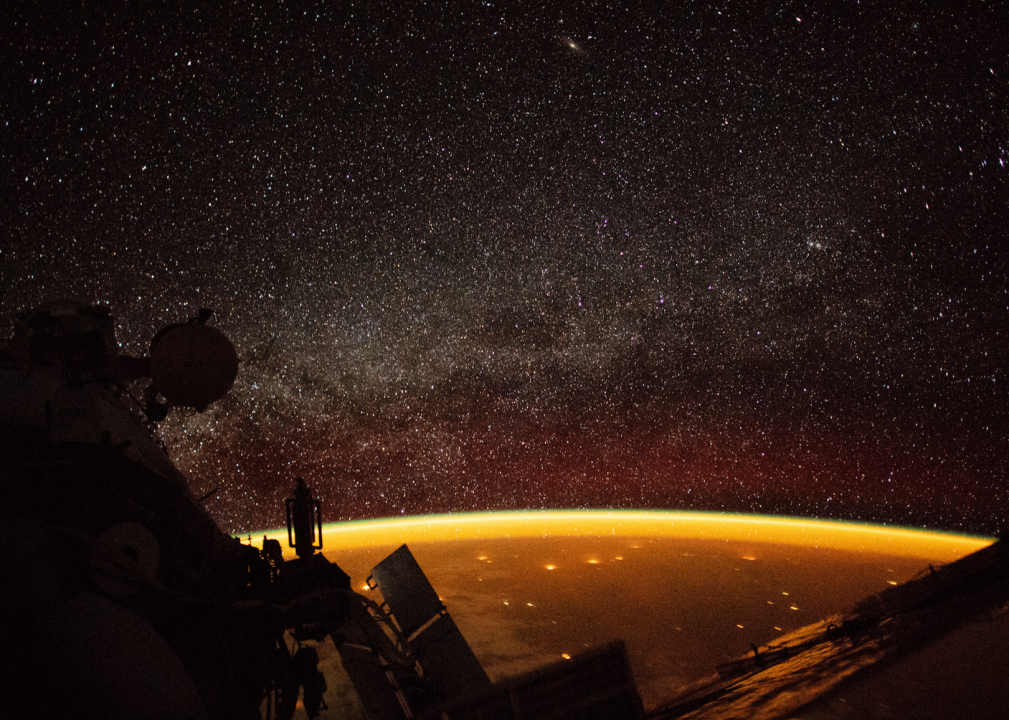
NASA
Earth from the International Space Station
An astronaut aboard the International Space Station shot a picture of Earth from 250 miles over Australia. Airglow—the orange hue—comprises diffuse bands of light created by atoms colliding in the atmosphere near the interface of Earth and space. Studying airglow is helping scientists to understand the connections between Earth weather and space weather.
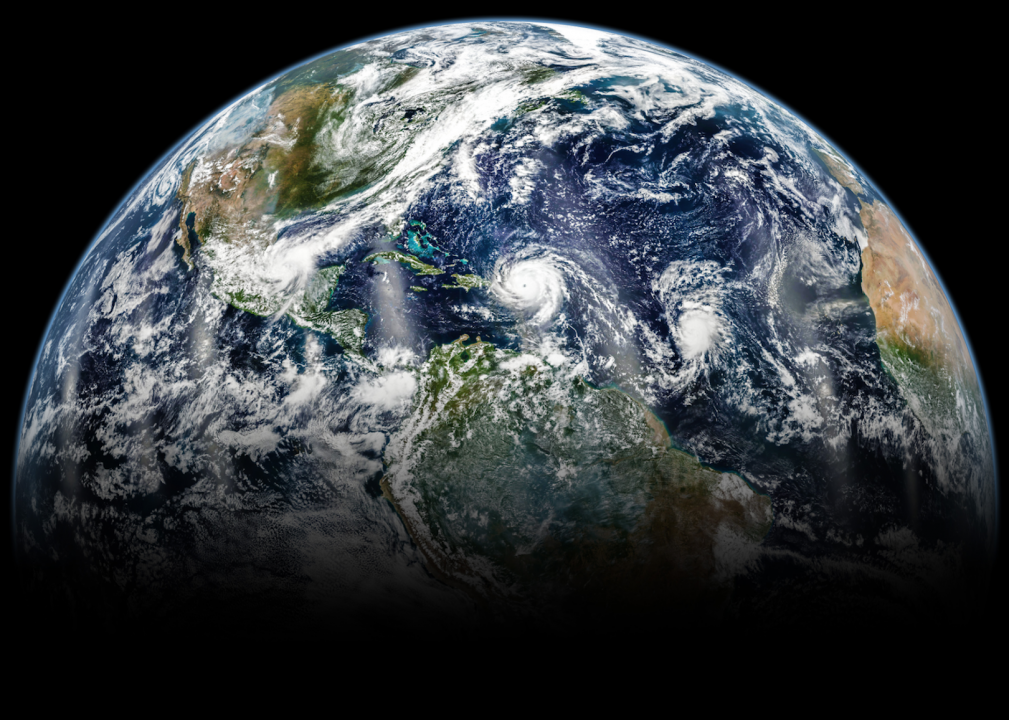
NASA/Joshua Stevens
Hurricanes on Earth
Several large hurricanes were brewing in the Atlantic Ocean in September 2017. By assembling several images taken in one day by the Visible Infrared Imaging Radiometer Suite, NASA could provide a vibrant look at this weather pattern. Views like this help communities make decisions about disaster preparedness, response, and recovery.
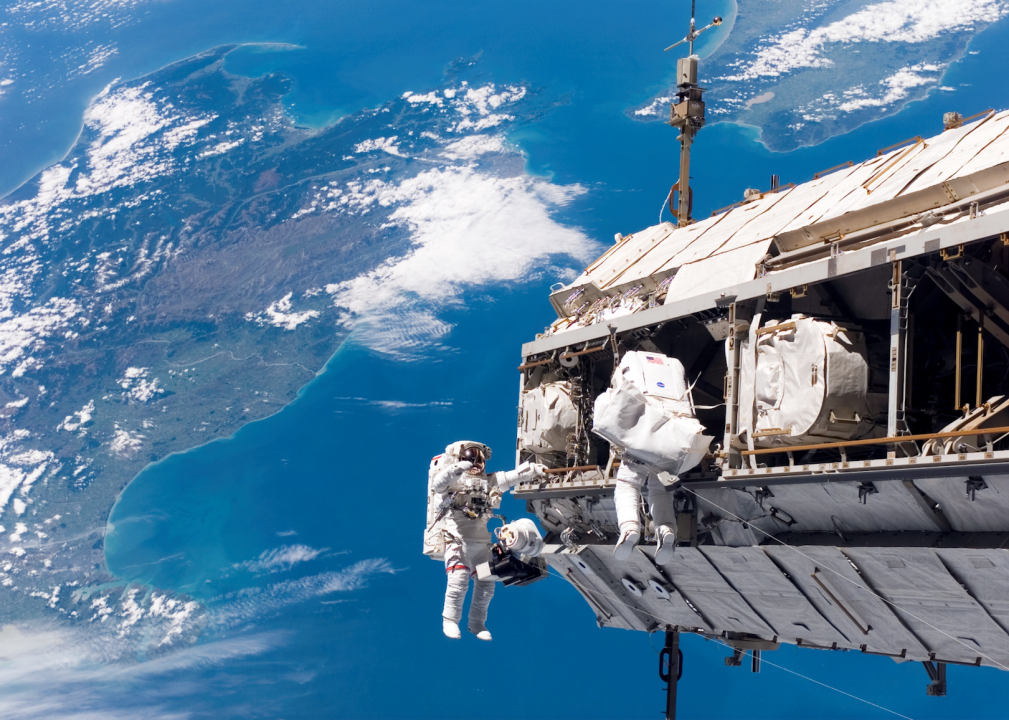
NASA
Shuttle space walk
In 2006, NASA astronaut Robert L. Curbeam Jr. and European Space Agency astronaut Christer Fuglesang continued construction on the International Space Station (ISS). Below them lie New Zealand and Cook Strait in the Pacific Ocean. The ISS must be maintained and repaired regularly so that its inhabitants can complete missions and experiments through at least 2024.
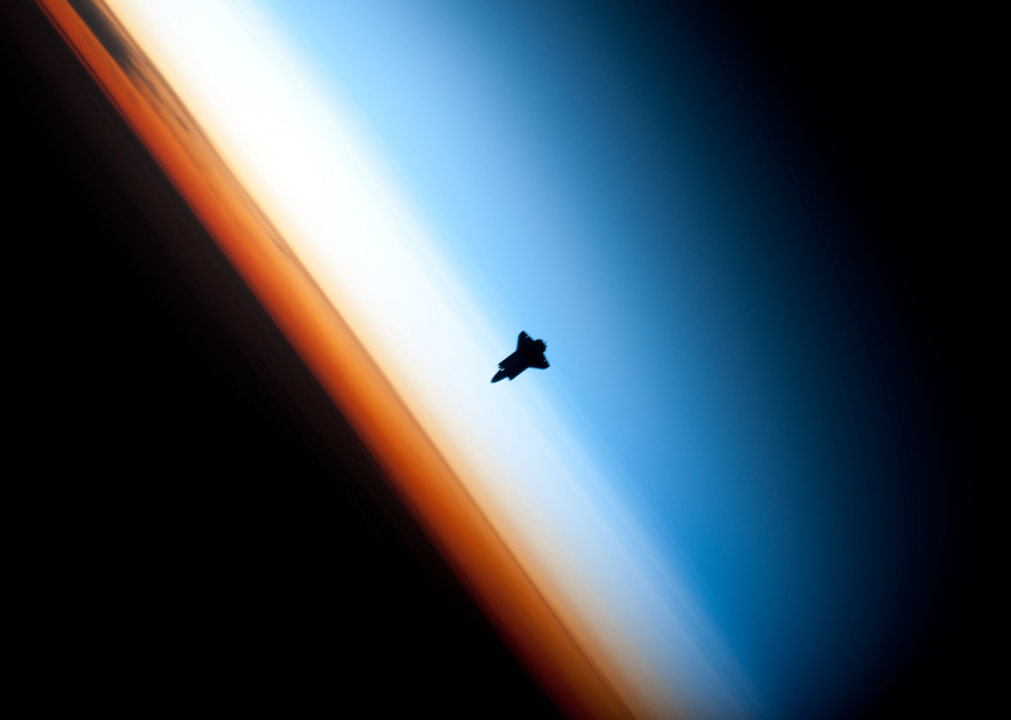
NASA
Shuttle in silhouette
An ISS crewmember captured a picture of the space shuttle Endeavour as it neared docking in February 2010. It was Endeavour’s 10th flight to the ISS with the mission of delivering Tranquility (a berthing, life support, and exercise module) and Cupola (a robotics work station).
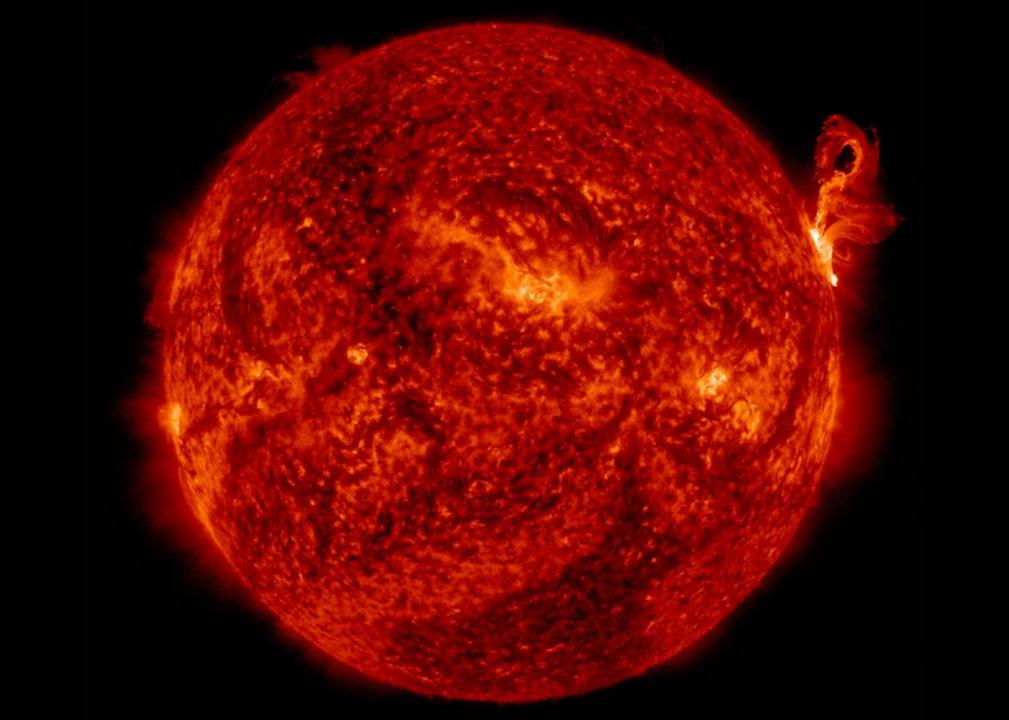
NASA/SDO
Eruption on the sun
NASA’s Solar Dynamics Observatory documented a dramatic solar event on March 2, 2012. This explosion, appearing on the right side of the sun in the photograph, is called a “prominence eruption.” The prominence is made up of plasma—matter in an ultra-high-energy state even more volatile than gas—and can loop thousands of miles into space.
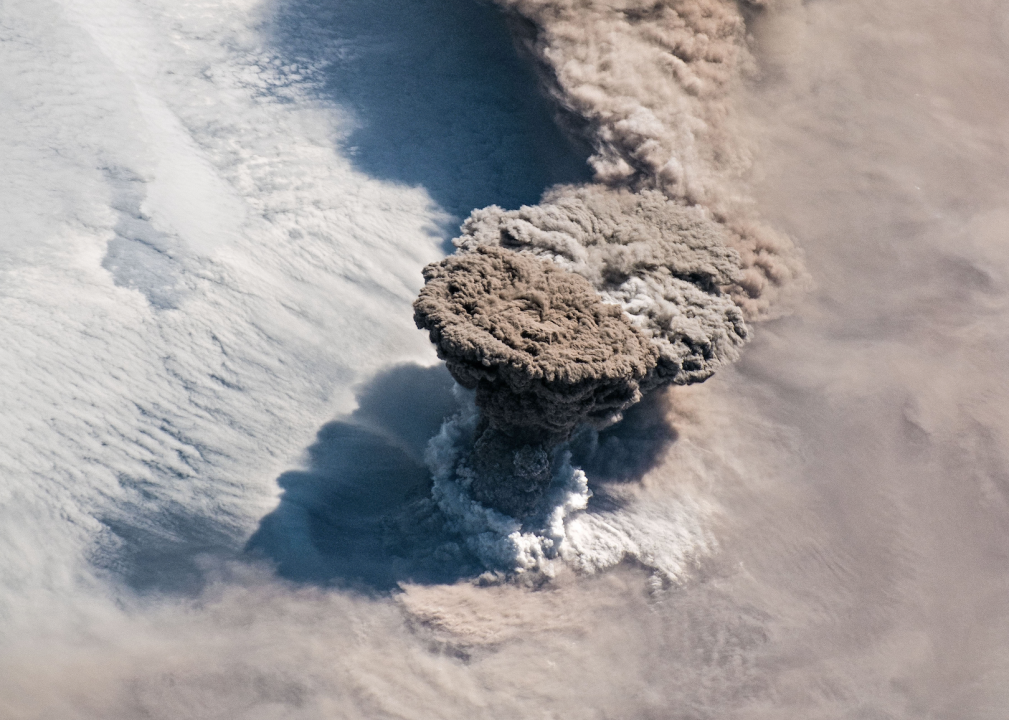
NASA
Raikoke volcano eruption
Raikoke Volcano sits on the remote Kuril Islands in the Pacific Ocean. On June 22, 2019, an ISS crew member captured an image of the volcanic plume of Raikoke’s first eruption in almost one hundred years. NASA satellites tracked the plume for activity that might affect aviation and climate.
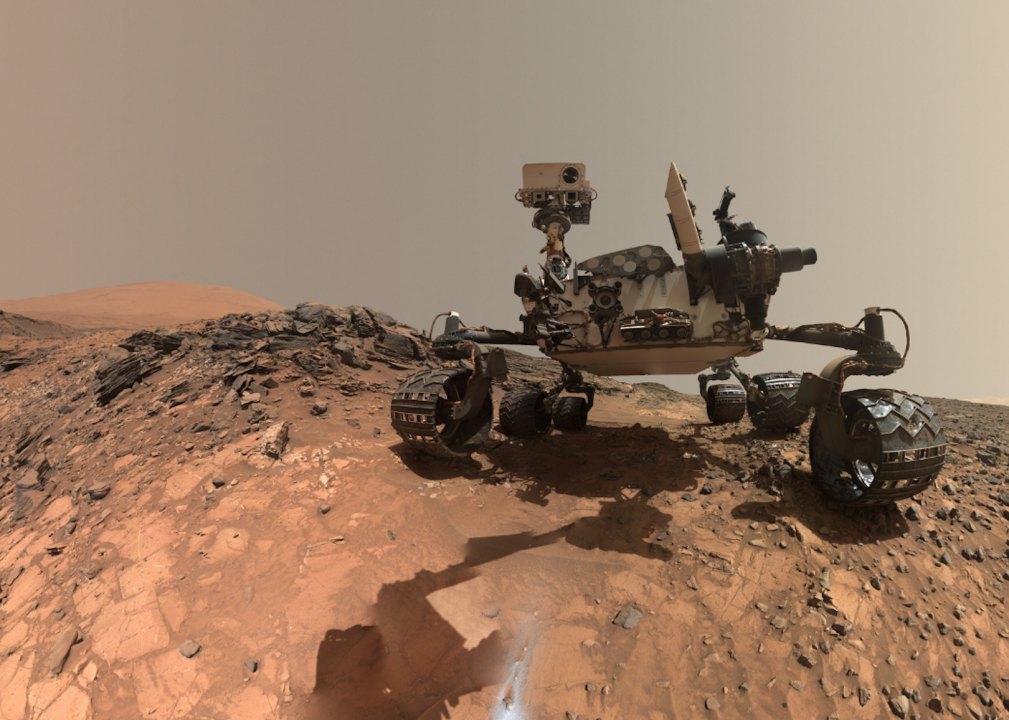
NASA
Rover selfie
The Curiosity Mars rover provided a selfie as part of its 1,065th day of work on Aug. 5, 2015. A combination of multiple images taken by its Hand Lens Imager, the picture shows Curiosity on a rock called “Buckskin” on Mount Sharp. The mission to drill into Buckskin and collect a sample for analysis yielded the discovery of silica, which may show that liquid water once existed on Mars.
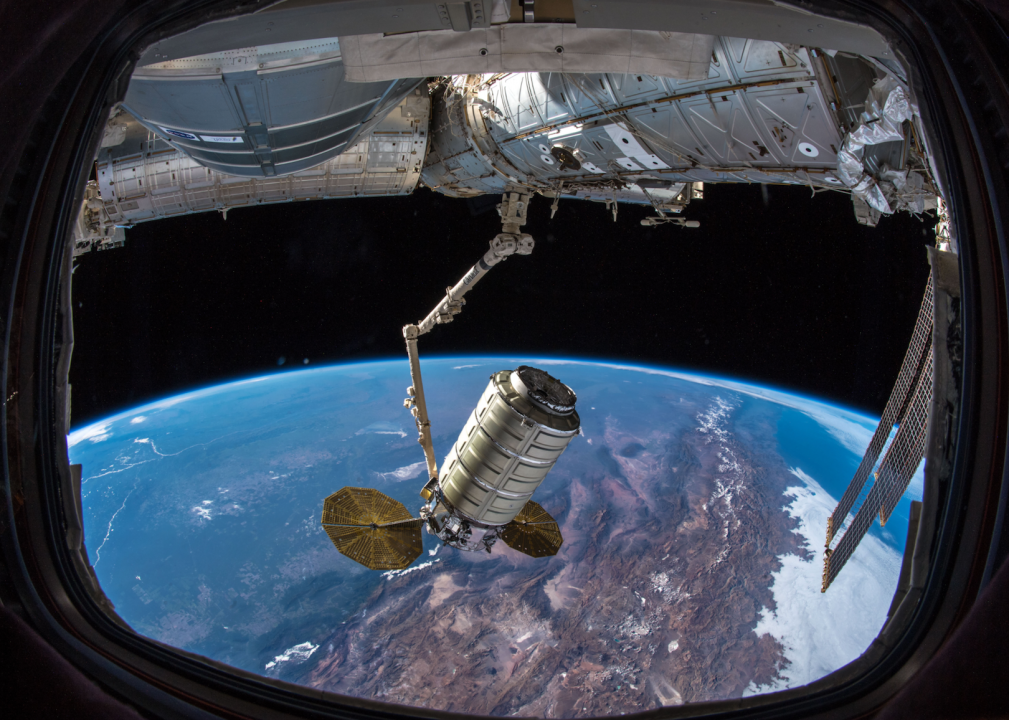
NASA
Cargo craft docks
The unmanned Cygnus cargo craft—the SS John Young—was photographed attaching itself to the International Space Station in November 2018 with a delivery of 7,400 pounds of supplies. The spacecraft was named after John Young, NASA’s longest-serving astronaut, who was an integral part of missions to the moon and the space shuttle program.
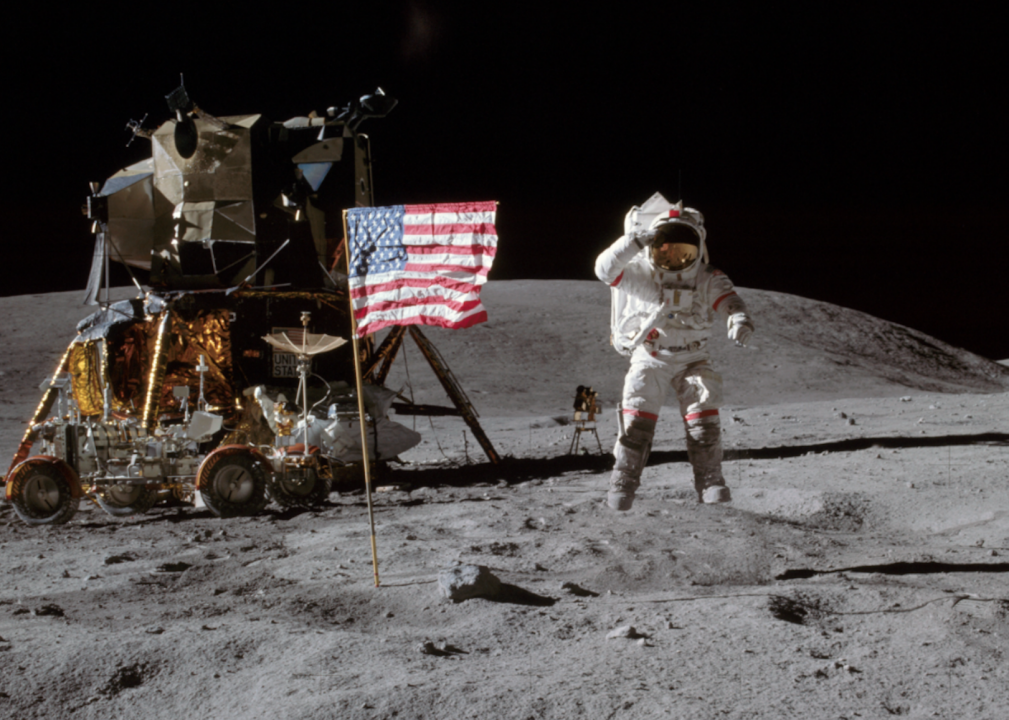
NASA
John Young on the moon
As part of the first extravehicular activity of its mission, Apollo 16 commander John W. Young jumps off the lunar surface while saluting the American flag in April 1972. Apollo 16 spent more than 20 hours on the surface, drove 16.6 miles in the lunar rover, and returned with 210 pounds of samples.
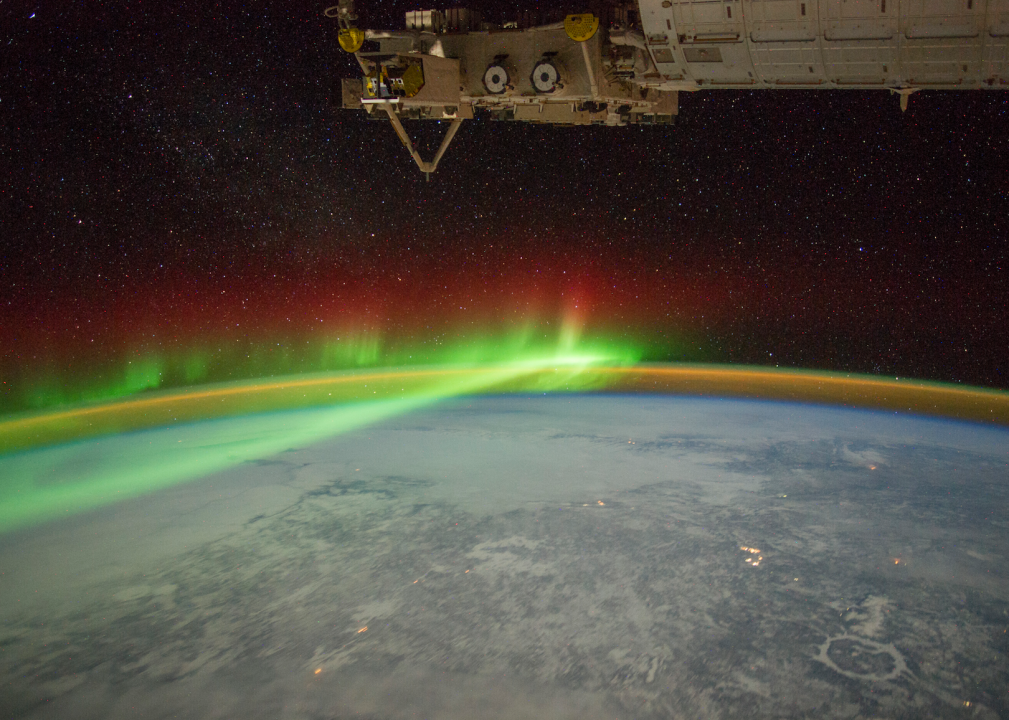
NASA
Canadian aurora
The snowy Quebec landscape is illuminated by the stars, the moon, and the aurora borealis in this picture from February 2012. Taken from the ISS, the image also shows airglow along the horizon. The Manicouagan Crater, seen in the lower right, was created by an asteroid impact approximately 214 million years ago.
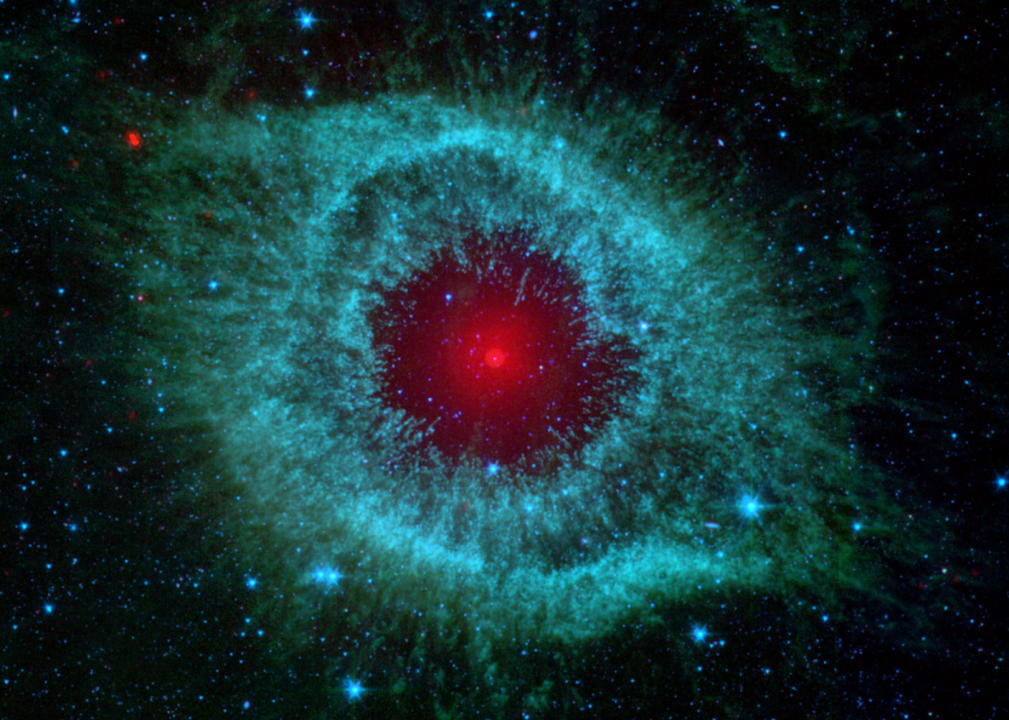
NASA/JPL-Caltech/Univ.of Ariz.
Helix Nebula
Launched in 2003, the NASA Spitzer Space Telescope is orbiting 353 miles above Earth. In 2007, it took an infrared image of the Helix nebula (sometimes referred to as the "Eye of God"). This nebula is in the constellation of Aquarius, 650 light-years away.
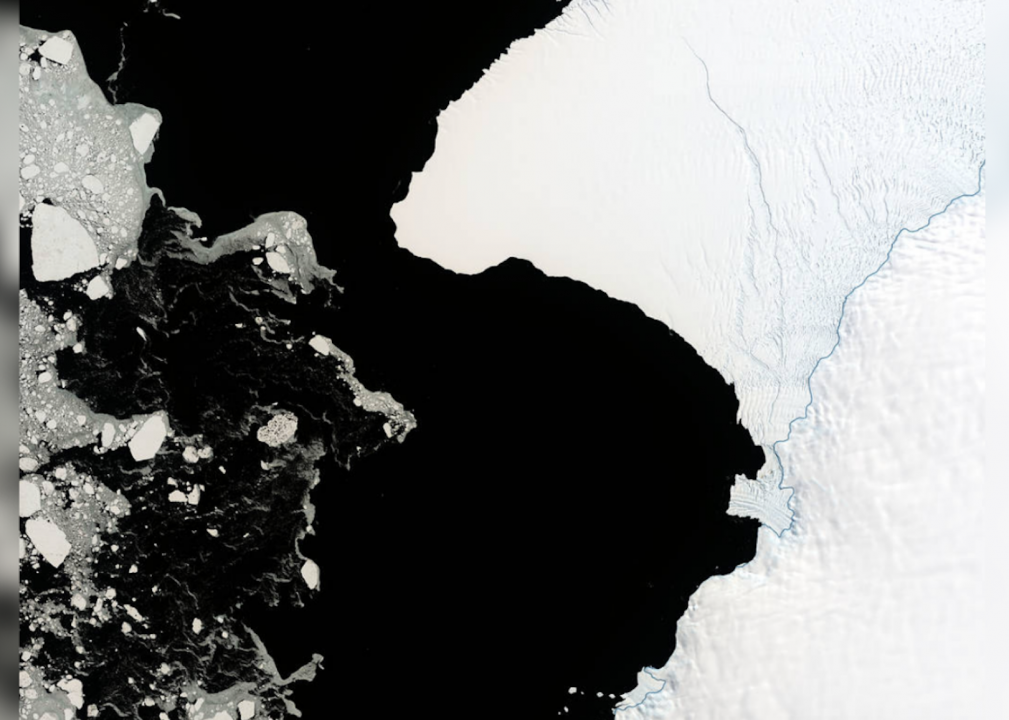
NASA Earth Observatory
The cracking Brunt Ice Shelf
In January 2019, NASA captured an image of Antarctica’s Brunt Ice Shelf as it neared a substantial break that will release an iceberg twice the size of New York City. The crack, at the top right of the image, is called the “Halloween crack,” as it first appeared in October 2016.
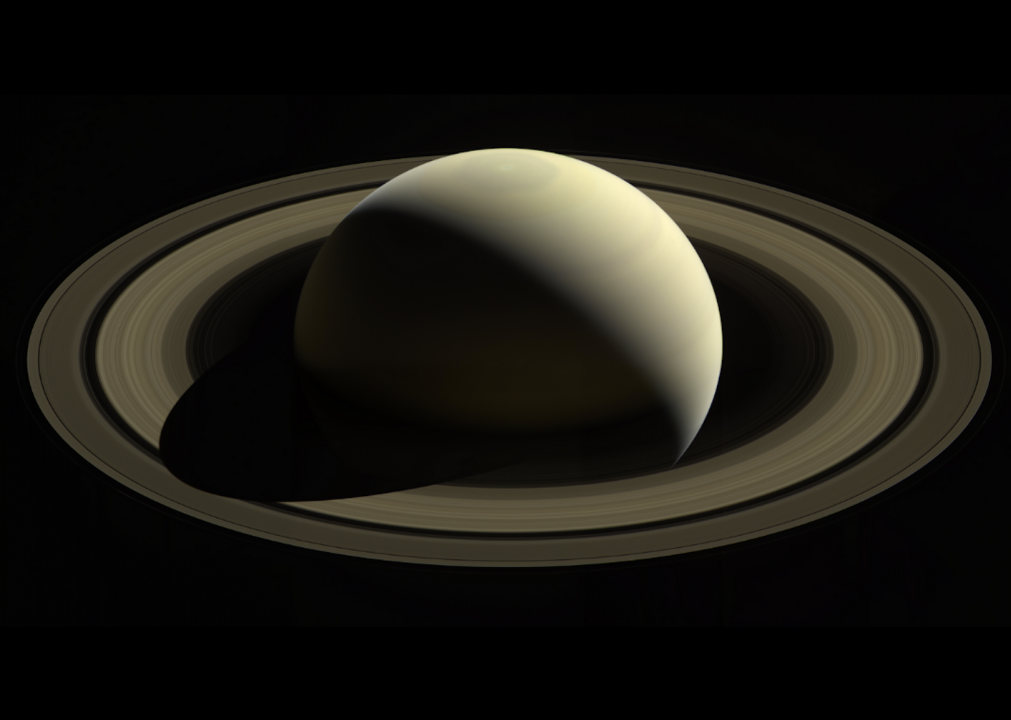
NASA/JPL-Caltech/Space Science Institute
Cassini’s capture of Saturn
Cassini was in space for 20 years on a mission to explore Saturn and its rings and moons. In 2016, it took several images with a wide-angle camera which were combined to create one full depiction of the planet. Cassini completed its work, having delivered images and science results, by plunging into Saturn’s atmosphere.

NASA
The heart of Madagascar
A 2018 photograph of the heart of Madagascar shows great landscape changes in the region as captured from the ISS by NASA astronaut Ricky Arnold. The world’s fourth-largest island is experiencing the decimation of rainforests because of the demand for its unique resources.
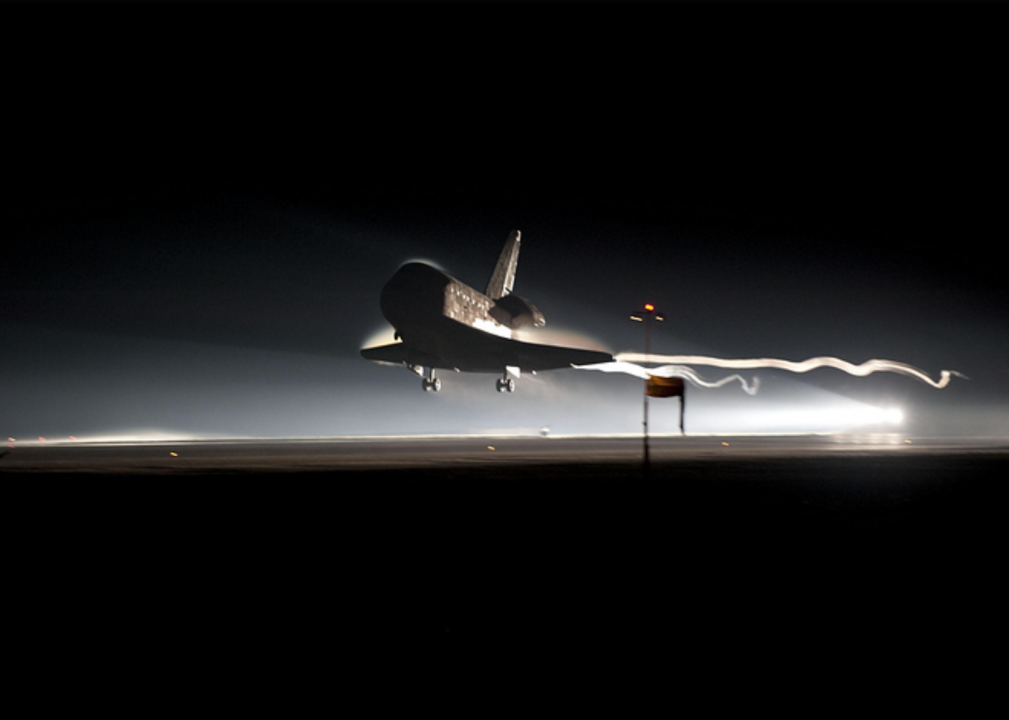
NASA
The last landing
In 2011, the 30-year space shuttle program ended as Atlantis touched down at NASA’s Kennedy Space Center. With five shuttles and 355 space flyers, the program completed 135 missions. Today, Atlantis is on display at the Kennedy Space Center Visitors’ Center.
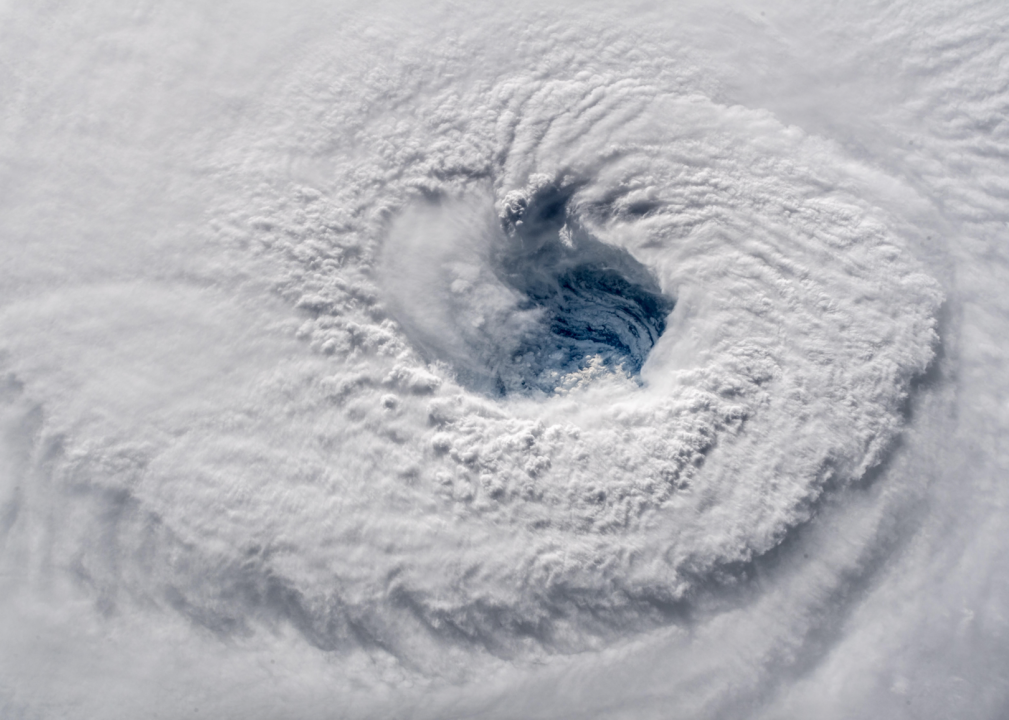
ESA/NASA–A. Gerst
The eye of the hurricane
The International Space Station captured the eye of a Category 4 hurricane in September 2018. Moving across the Atlantic toward the Carolinas, the hurricane’s winds were clocked at 130 miles per hour. Florence reached landfall on Sept. 14 with a record-breaking storm surge and rainfall.
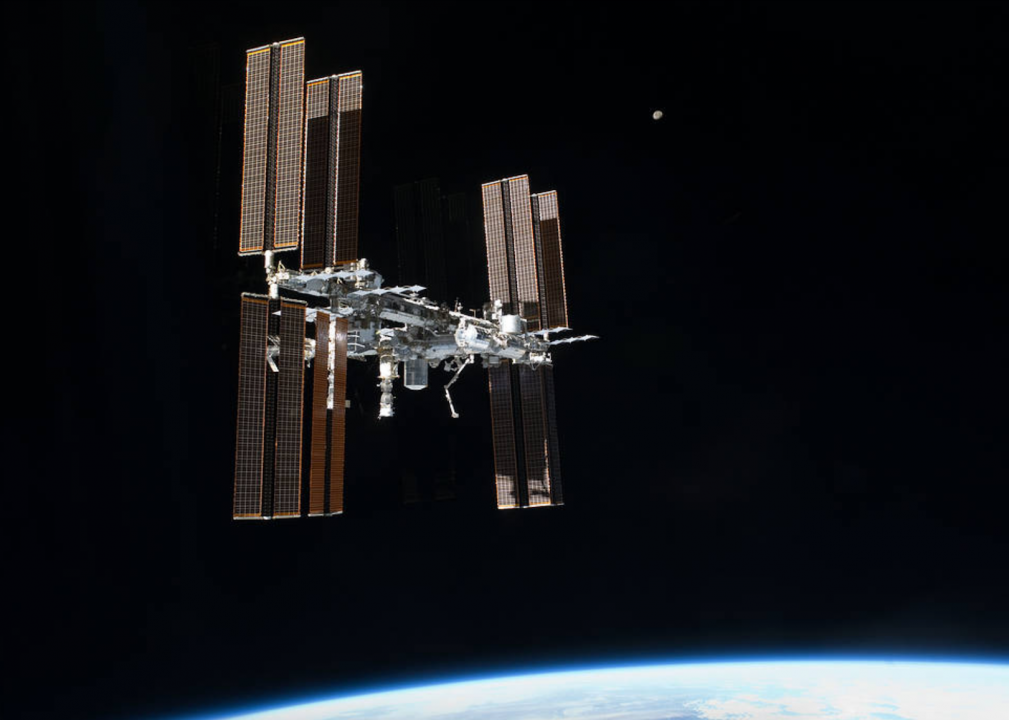
NASA
International Space Station
During their separation on July 19, 2011, space shuttle Atlantis took this photograph of the International Space Station. Russian cosmonauts Andrei Borisenko, Sergei Volkov, and Alexander Samokutyayev, Japan Aerospace Exploration astronaut Satoshi Furukawa, and NASA astronauts Mike Fossum and Ron Garan were all aboard the ISS. The shuttle astronauts were Chris Ferguson, Doug Hurley, Sandy Magnus, and Rex Walheim.
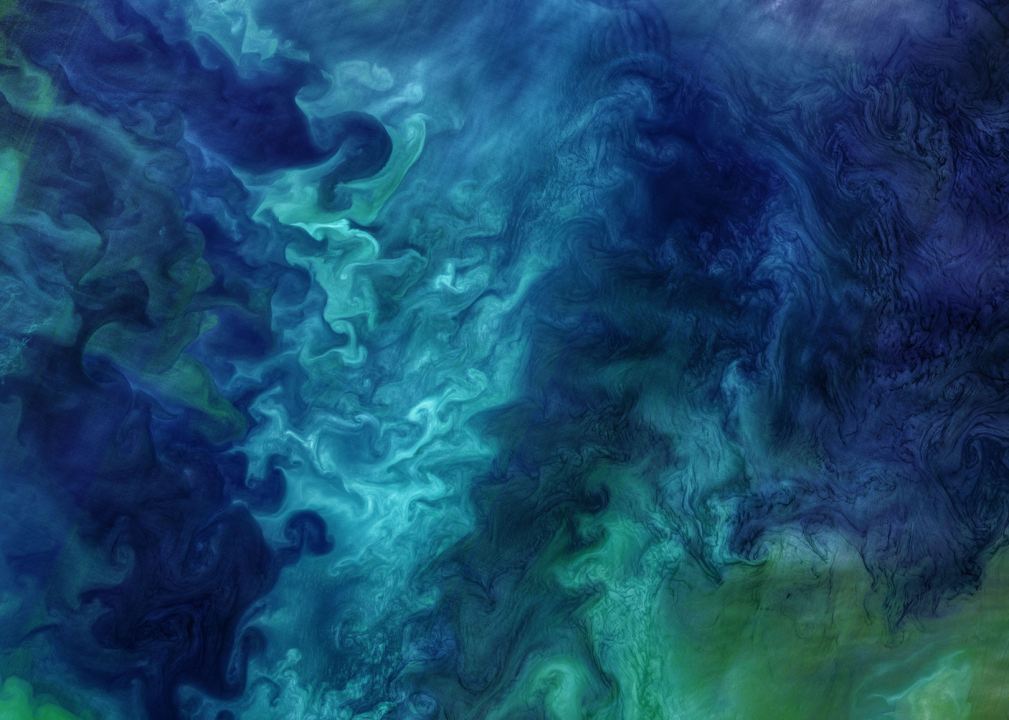
NASA/U. S. Geological Survey/Norman Kuring/Kathryn Hansen
Watercolor of the sea
Taken from observational satellite Landsat-8 in June 2018, this image of the Chukchi Sea illuminates colorful blooms of phytoplankton. Cool nutrient-rich water from the Bering Sea meet warm, less-salty Alaskan coastal water to create these patterns. The blooms can be seen even through deep Arctic ice cover.
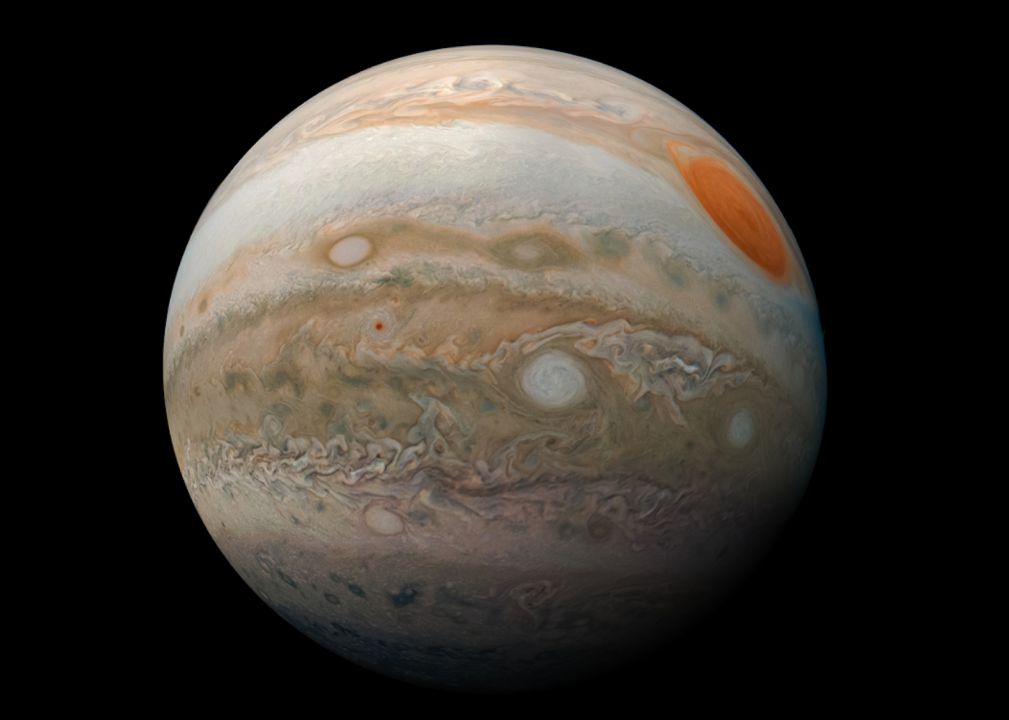
NASA/JPL-Caltech/SwRI/MSSS/Kevin M. Gill
The Great Red Spot of Jupiter
During a close pass of Jupiter in February 2019, NASA’s Juno spacecraft captured the gas giant planet and its Great Red Spot, which is the site of a massive storm on the planet’s surface. This view was created by citizen scientist Kevin M. Gill by compiling multiple images and data from the JunoCam. Juno was launched in 2011 and reached Jupiter in 2016. Its sole mission is to explore, study, and map the planet.
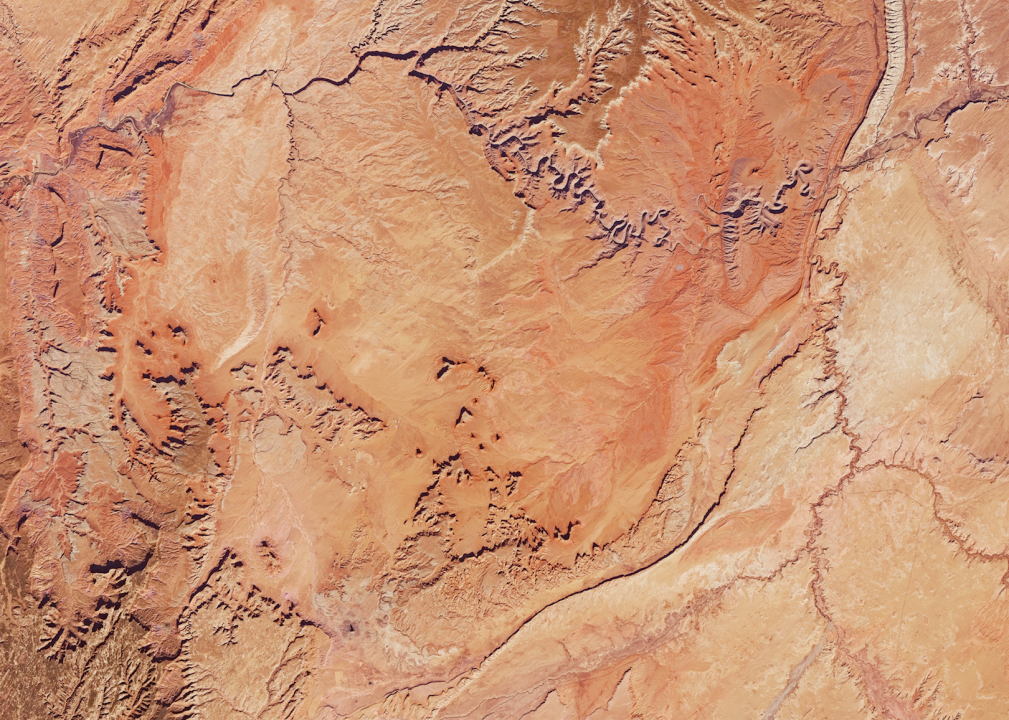
NASA
Monument Valley
In the Navajo Tribal Park on the border of Arizona and Utah, Monument Valley is one of the most recognizable areas of the American West. Red-rock formations and sandstone towers rise hundreds of feet above its sandy floor. The Operational Land Imager on Landsat-8 captured the elevation differences of the Valley in November 2016.
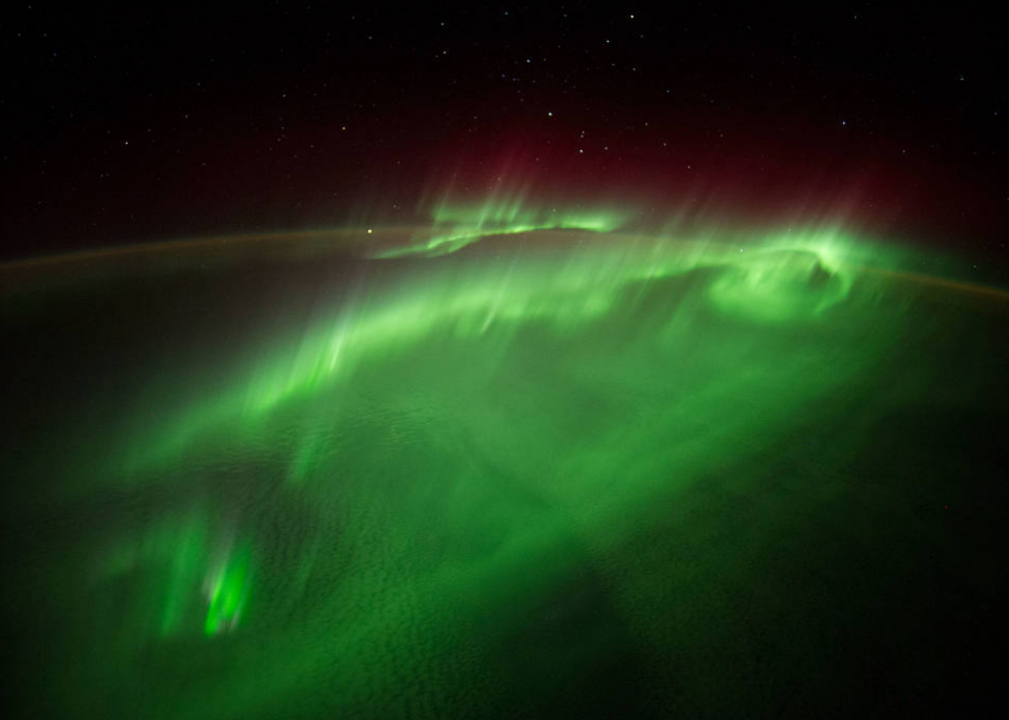
NASA/ESA/Alexander Gerst
Flying through an aurora
Flying 200 miles above Earth has given the crew members on the International Space Station the opportunity to document the changes and events on their home planet from the Station’s unique perspective. In August 2014, the ISS flew through a green aurora. An aurora is observed when charged electrons from solar wind interact with Earth’s atmosphere.
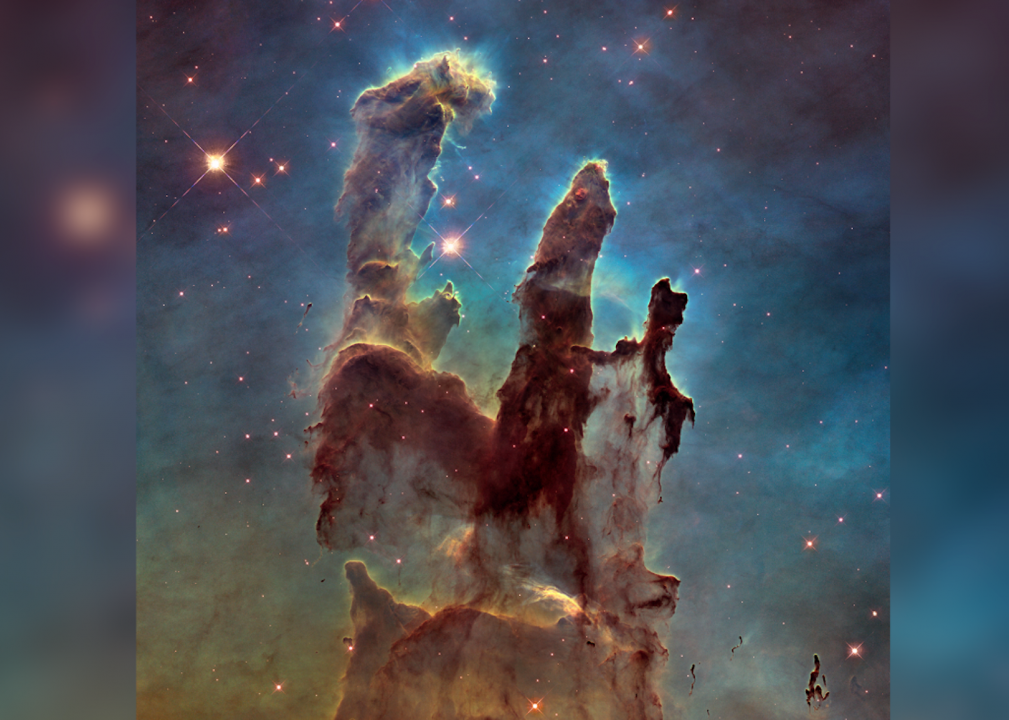
NASA/ESA/Hubble Heritage Team (STScI/AURA)
Pillars of Creation
The Pillars of Creation are part of the Eagle Nebula, approximately 5,700 light years from Earth. This composite image uses data from NASA’s Chandra X-ray Observatory and the Hubble Space Telescope. The Pillars area of the nebula is an active star-forming region.
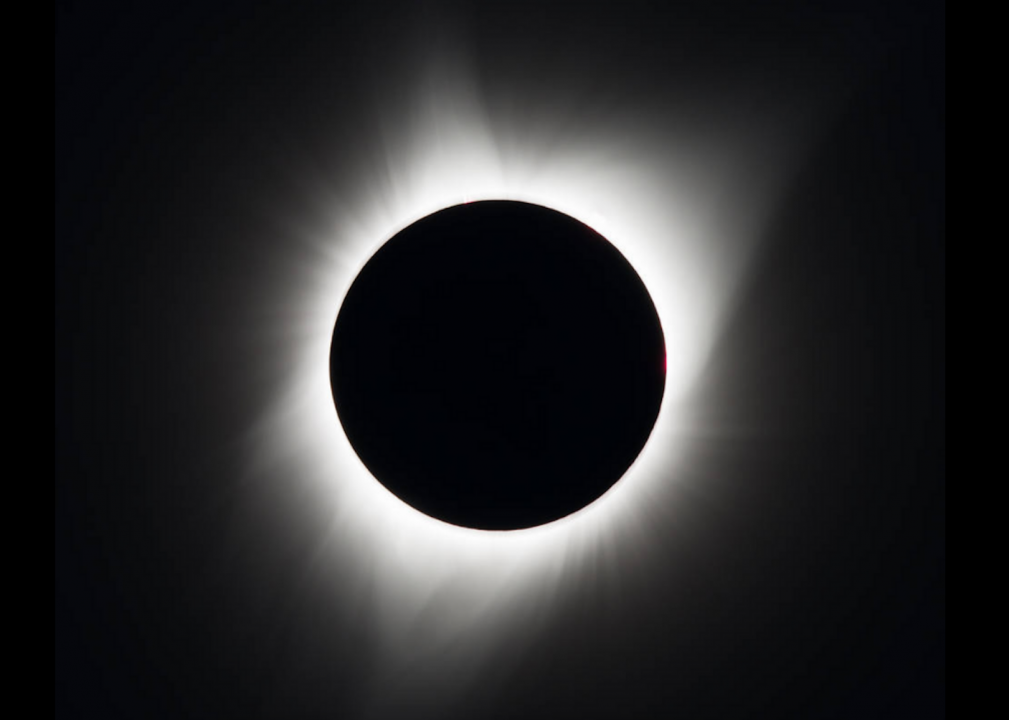
NASA/Aubrey Gemignani
Total eclipse of the sun
The total solar eclipse of the sun on Aug. 21, 2017, offered a rare opportunity for NASA to collect data on the Earth-sun connection. Its long, uninterrupted path over land, starting at the Oregon coast where this image was captured, provided more time for scientists to study the sun's corona.
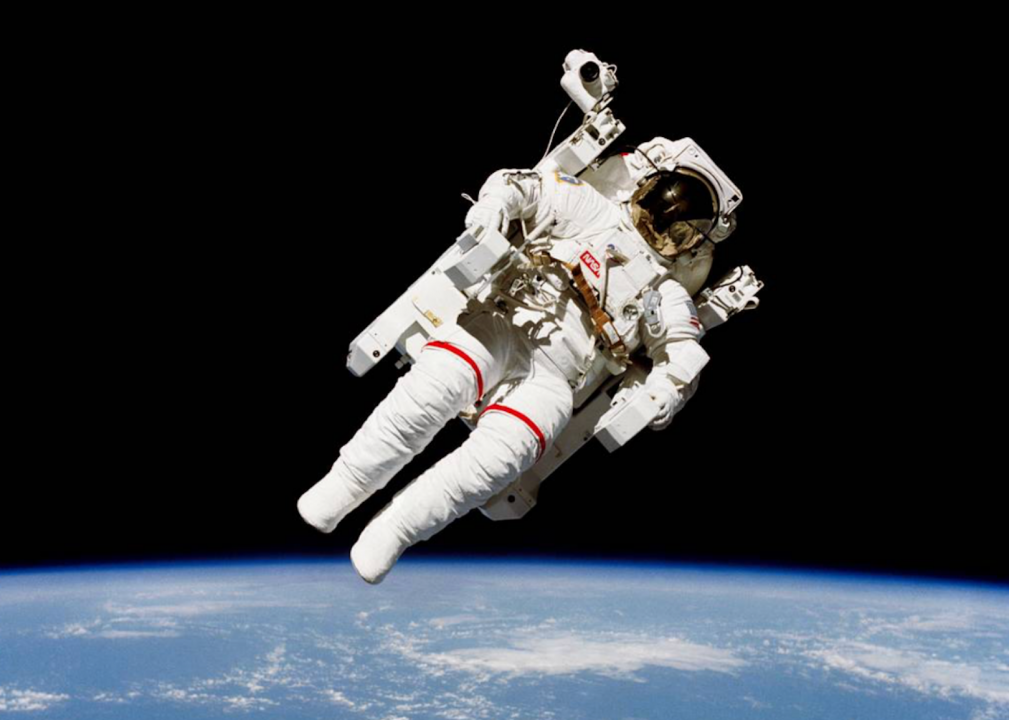
NASA
Untethered in space
In 1984, Mission Specialist Bruce McCandless II took the historic first untethered spacewalk. Floating a few meters away from Space Shuttle Challenger, he spent four hours in the Manned Maneuvering Unit (MMU). McCandless logged more than 300 hours in space during his long career with NASA.
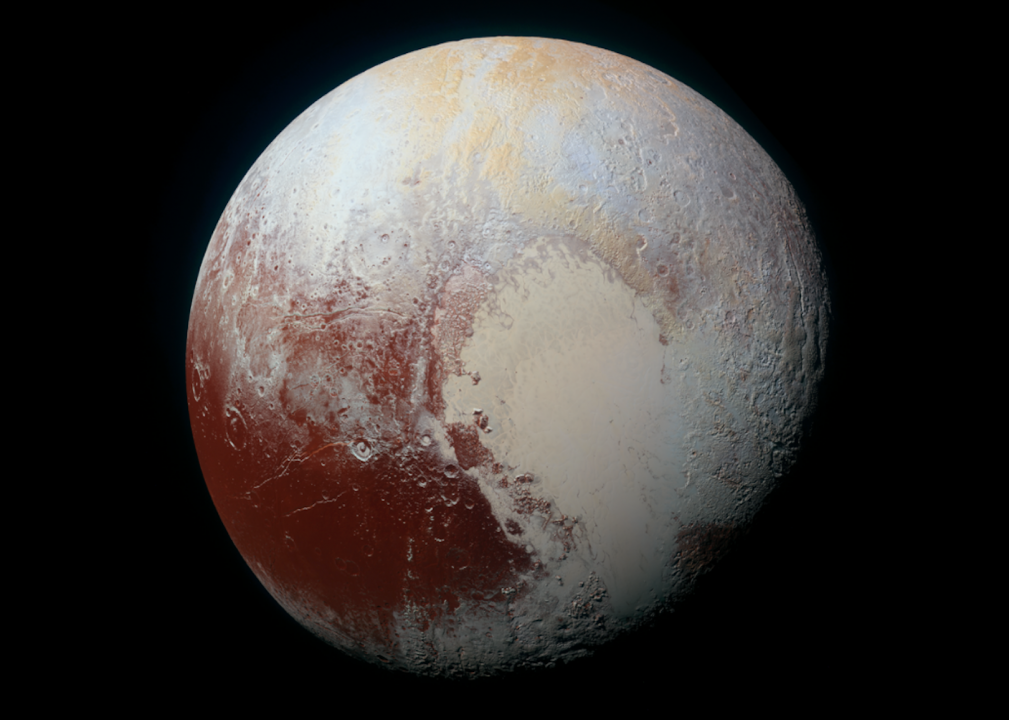
NASA/JHUAPL/SwRI
Marbled Pluto
Pluto’s color variations were captured by NASA’s New Horizons space probe in 2015. The enhanced image shows the marbling effect of the dwarf planet’s diverse landforms. Pluto has mountains and plains with blue skies as well as ice and red snow.
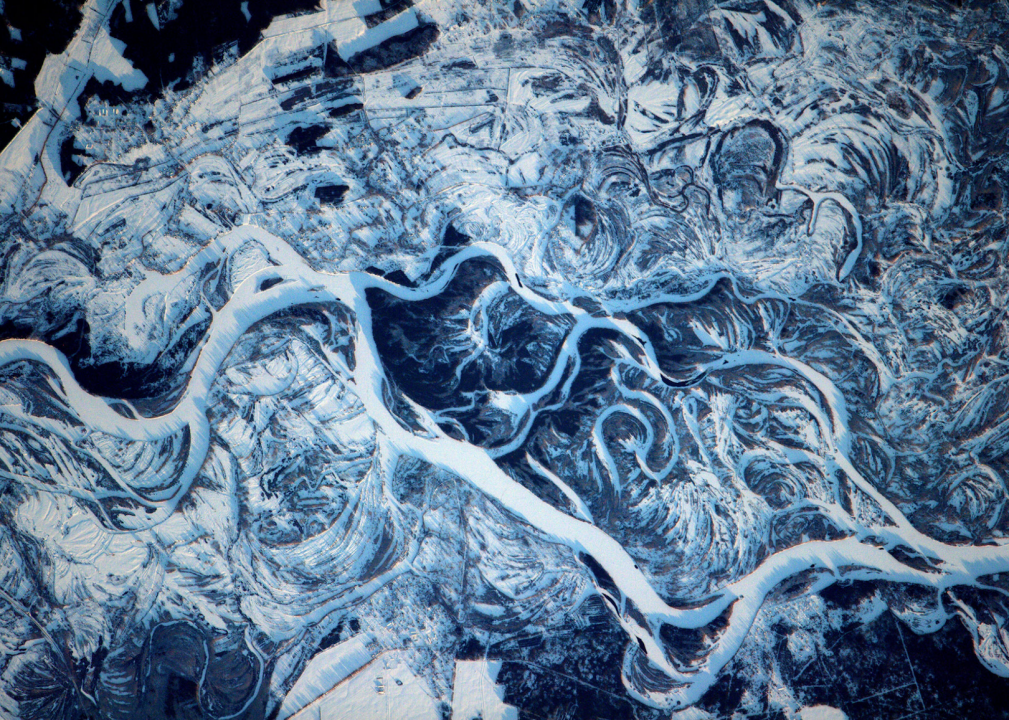
NASA/ESA/Thomas Pesquet
The wild river
Captured by European Space Agency astronaut Thomas Pesquet in 2017, this image shows the 1,400-mile Dnieper River in snowy, icy February. The river runs from Russia to the Black Sea. The International Space Station orbits Earth approximately 16 times each day and is keeping a visual record of our ever-changing planet.
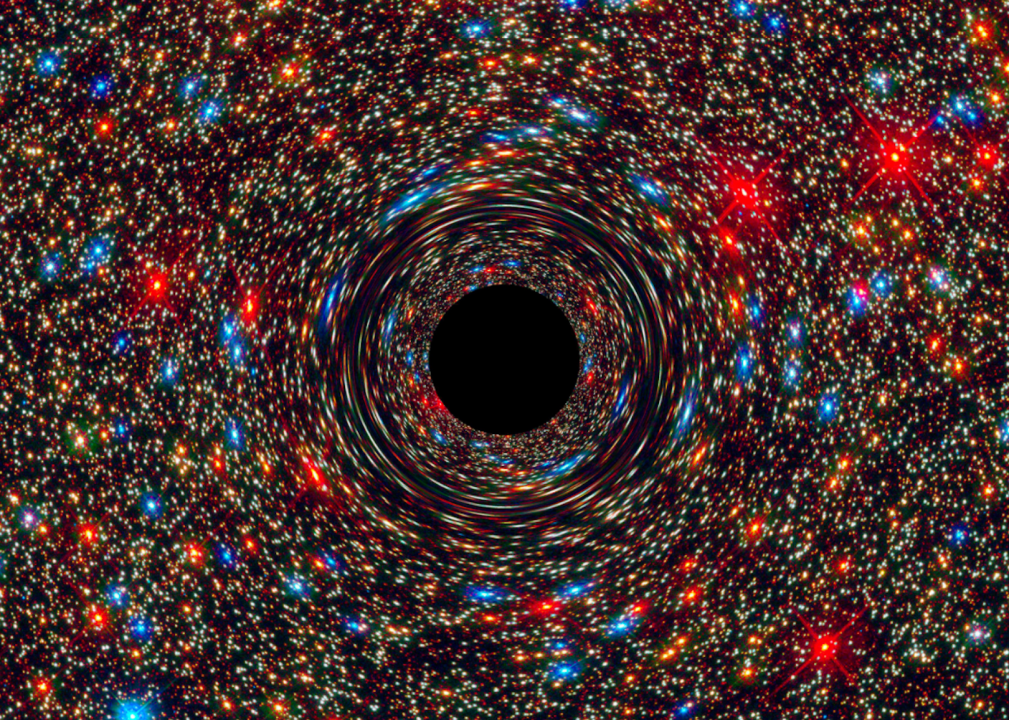
NASA/ESA/D. Coe/J. Anderson/R. van der Marel(STScI)
Supermassive black hole
This computer-simulated image shows a supermassive black hole, weighing 17 billion suns, discovered in a sparsely populated area of the universe with the NASA’s Hubble Space Telescope and the Gemini Telescope in Hawaii. Black holes were previously believed to be located in very large galaxies in densely populated clusters. The black region in the center is the event horizon, where no light can escape from the black hole’s powerful gravity.
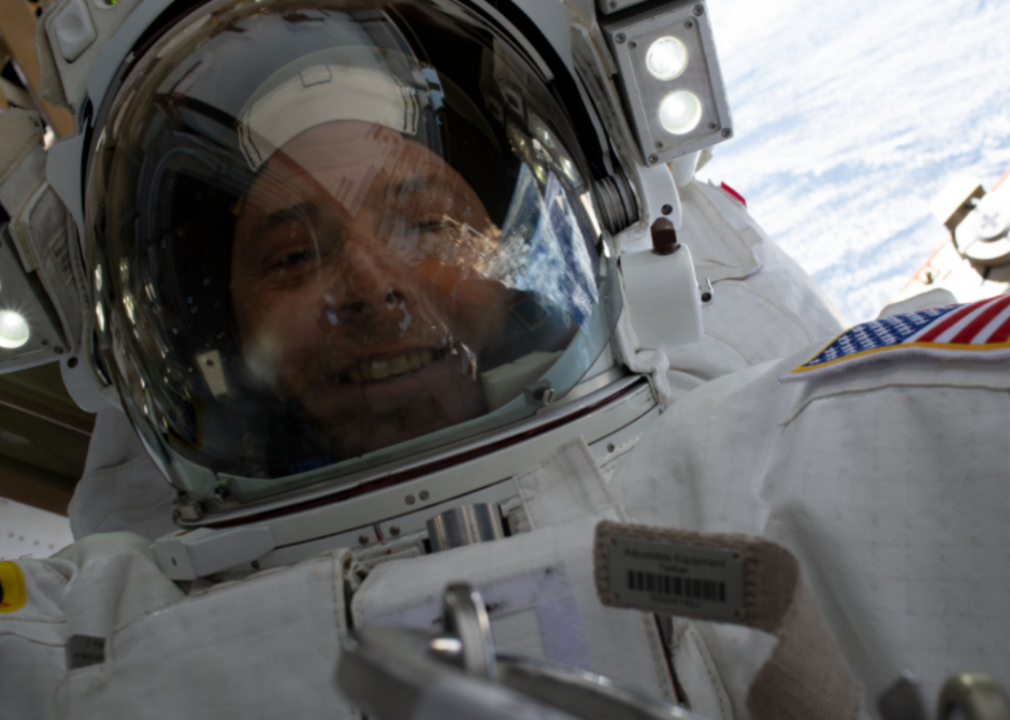
NASA
The space selfie
During a spacewalk to do maintenance on the International Space Station in March 2019, astronaut Nick Hague took a selfie. Documenting his first spacewalk, Hague was 250 miles above Earth. It wasn’t the first space selfie, though. Buzz Aldrin claimed that achievement during his moon walk in 1969.
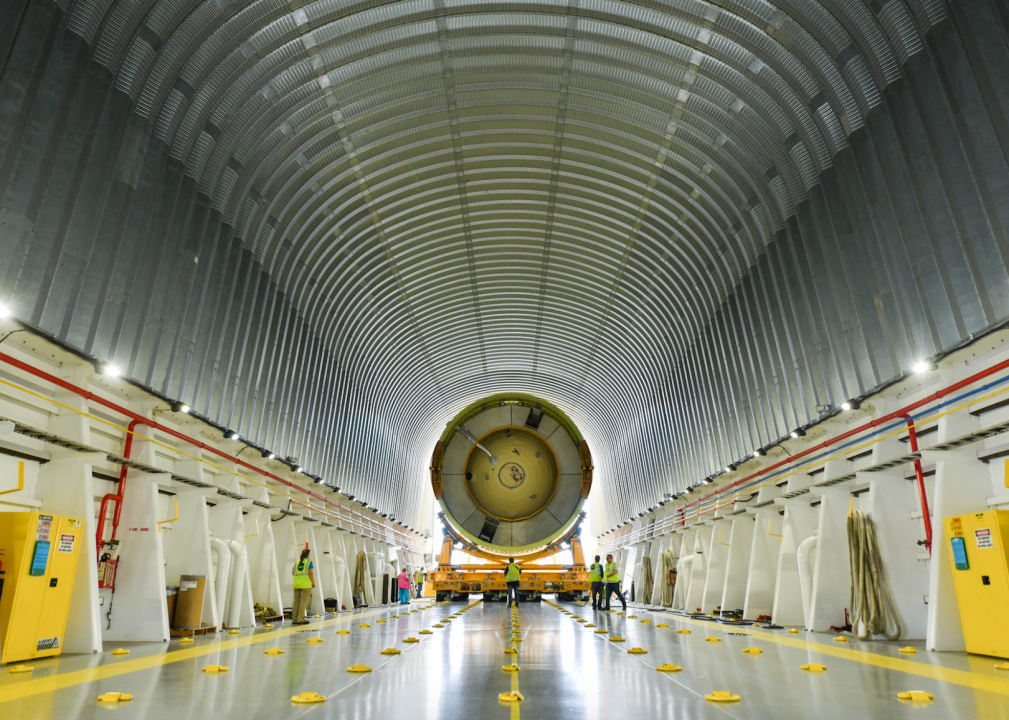
NASA/Jude Guidry
An SLS test article
NASA’s Space Launch System (SLS) is a powerful rocket system designed to enable exploration far into the solar system. The rocket is intended to send Artemis 1—along with the first woman and first person of color lunar explorer—to the moon by 2024.